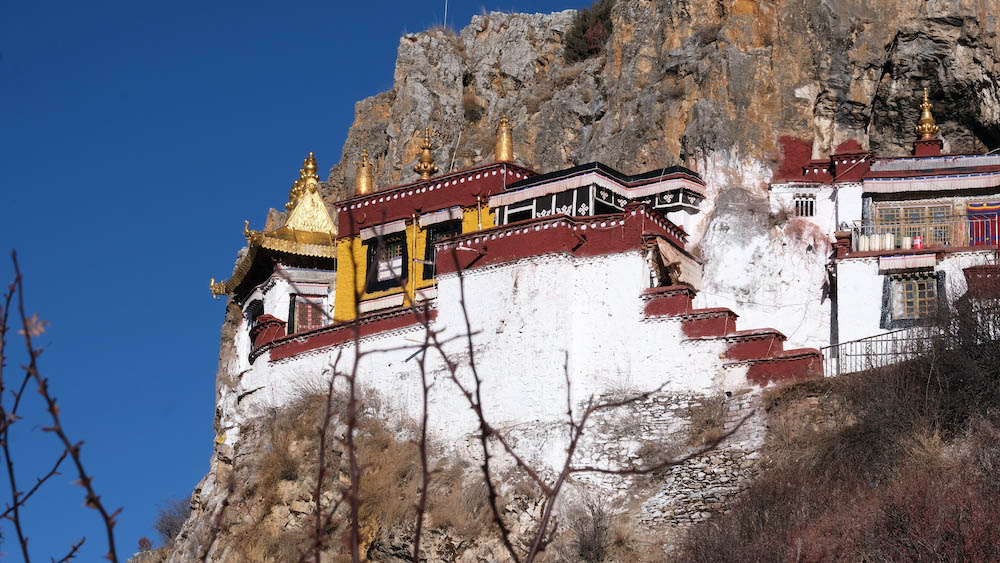+86-15889090408
[email protected]
King Songtsen Gampo and his two foreign queens are said to have meditated here in the Peu Marsergyi Lhakhang, where they discovered self-arising symbols of buddha-body, speech, and mind, and in the Chogyel Puk. Later, Padmasambhava concealed many terma objects around Yerpa, including the celebrated ritual dagger of Sera (Sera Phurzhal), which was eventually rediscovered by the treasure-finder Darcharuba at Sewalung. Padmasambhava also passed some 7 months in retreat in the Dawa Puk, which is regarded as one of his three foremost places of attainment (drub-Ne).


In the 9thcentury, Lhalung Pelgyi Dorje stayed at Verpa in solitary meditation, both prior to and after his assassination of the apostate king Langdarma. Then, following the later phase of Buddhist propagation in Tibet, Yerpa came to greater prominence under Kadampa’s influence: Lu-me founded 108 temples on the hillside, including a Vairocana Lhakhang. Marton Chokyi Jungne founded the Jampa Lhakhang, and Atisha himself passed 3 years here, constructing with the aid of his foremost disciples, the Kyormo Lhakhang and the Chokhang.
It takes about two hours to drive to the caves of Drak Yerpa, situated northeast of Lhasa, either via the Taktse Zampa bridge or via Kawa and Yerpa Da villages on the more direct route from Lhasa (16 kilometers).
Following the Yerpa-chu tributary of the Kyi-chu upstream, and past a reservoir, you will arrive at this historic complex of caves and temples, some of which date from the earliest period of Buddhist activity in Tibet.
The amphitheater ridge of Yerpa and some of its larger caves are visible afar from the Lhasa-Kongpo road on the south bank of the Kyi-chu. The highest point on the ridge is the peak of Yerpa Lhari, the abode of the local deity, at the extreme northeast end of the ridge.
The caves are approached via the ruined 11th-century Kadampa monastery of Yerpa Drubde, situated some 100 meters below the dark cavernous grottoes of the white cliffs. Among the many caves and ruined shrines, the following (described from West to east) are the most important:
Tendrel Drubpuk associated with Atisha and his Kadampa followers: Chakna Dorje Puk, containing a ‘self-arising stone image of Vajrapani: Jampa Lhakhang, the largest cave, which once con- lined a celebrated 13th-century image of Maitreya along with the Fight Bodhisaltras, and below which are relief images of the Lords of the Three Enlightened Families: Drubtob Puk, dedicated to the Eighty-four Great Accomplished Masters (Mahesiddha) of ancient India;
Chogyel Puk, where King Songtsen Gampo meditated in the 7th century and which once contained images of the king and the protectress Shridevi.
Dawa Puk contains a Sculpted image of Padimasambnava, the self-arising image of Ekajati, and stone footprints of Padmasambhava and his student Lhalung Pelgyi Dorje;
Lhalung Puk where Lhalung Peldor hid for some years during the period of Langdarma’s persecutions and Neten Lhakhang, which was constructed by Lume in 1011 and formerly contained images of Shakyamuni Buddha surrounded by the sixteen elders.
Below this last shrine is the stone throne used of Aisha and a charnel ground.” Atisha’s hermitage the ruins of which are even now visible had 300 monks as recently as the 19th century when it served as the summer feet man she Upper Tantric College ( Ramoche).
Drek Yerpa is one of the best places for hiking in Lhasa. It’ll take around two hours for hiking around the cave temples.

